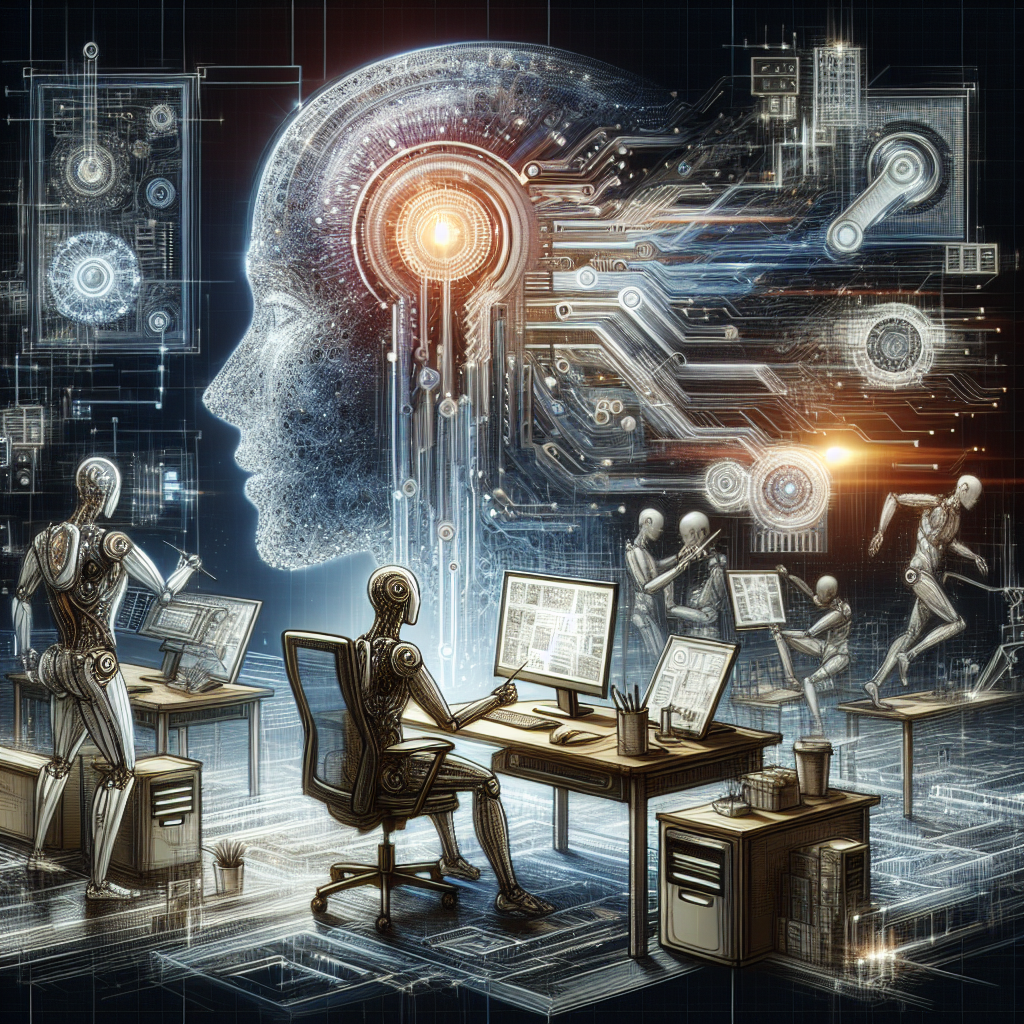Artificial Intelligence (AI) has revolutionized many industries, and architecture is no exception. AI-driven design tools are changing the way architects work, enhancing creativity and efficiency in the design process. By leveraging AI technologies, architects can explore new possibilities, generate innovative design solutions, and ultimately create more sustainable and functional buildings.
One of the key advantages of AI-driven design is its ability to analyze vast amounts of data and generate insights that can inform the design process. With AI, architects can quickly assess the environmental impact of a building, optimize energy efficiency, and predict how a design will perform in different conditions. By using AI-driven design tools, architects can make more informed decisions that result in better-designed buildings.
AI can also help architects explore new design possibilities through generative design algorithms. These algorithms use machine learning to generate a variety of design options based on a set of parameters provided by the architect. This allows architects to quickly explore different design options and find creative solutions that they may not have considered otherwise. By leveraging AI-driven design tools, architects can push the boundaries of what is possible in architecture and create more innovative and visually stunning buildings.
In addition to enhancing creativity, AI-driven design tools can also improve the efficiency of the design process. By automating repetitive tasks and streamlining workflows, AI can help architects save time and focus on more creative aspects of the design process. For example, AI can assist with tasks such as drafting, modeling, and rendering, allowing architects to spend more time on design exploration and experimentation. This can lead to faster project timelines and more efficient use of resources.
Another benefit of AI-driven design is its ability to facilitate collaboration among architects, engineers, and other stakeholders. By providing a shared platform for design exploration and communication, AI-driven design tools can help streamline the collaboration process and ensure that all team members are on the same page. This can lead to better coordination, improved communication, and ultimately, better-designed buildings.
While AI-driven design offers many benefits, it also raises some concerns. One of the main concerns is the potential impact on the role of the architect. As AI technologies become more sophisticated, there is a fear that architects may be replaced by machines. However, most experts agree that AI is not meant to replace architects but rather to augment their abilities and enhance their creativity. By leveraging AI-driven design tools, architects can focus on the aspects of design that require human creativity and intuition, while letting AI handle more routine tasks.
Another concern is the potential bias in AI algorithms. Like any technology, AI is only as good as the data it is trained on. If the data used to train an AI algorithm is biased, the algorithm may produce biased results. This can be a concern in architecture, where decisions can have a significant impact on communities and the environment. Architects must be aware of the potential biases in AI algorithms and take steps to ensure that their design decisions are fair and equitable.
Despite these concerns, the potential of AI-driven design in architecture is immense. By leveraging AI technologies, architects can enhance their creativity, improve efficiency, and create more sustainable and functional buildings. As AI continues to advance, the possibilities for AI-driven design in architecture are endless.
FAQs:
Q: How can AI-driven design enhance creativity in architecture?
A: AI-driven design tools can help architects explore new design possibilities, generate innovative solutions, and push the boundaries of what is possible in architecture. By leveraging AI technologies, architects can make more informed decisions, streamline workflows, and focus on the creative aspects of the design process.
Q: What are some examples of AI-driven design tools in architecture?
A: Some examples of AI-driven design tools in architecture include generative design algorithms, environmental analysis software, and automated drafting and modeling tools. These tools can help architects optimize energy efficiency, assess environmental impact, and generate a variety of design options quickly and efficiently.
Q: What are the potential concerns with AI-driven design in architecture?
A: Some potential concerns with AI-driven design in architecture include the impact on the role of the architect, potential bias in AI algorithms, and the ethical implications of using AI in design decisions. Architects must be aware of these concerns and take steps to address them in their practice.
Q: How can architects ensure that AI-driven design is used ethically in architecture?
A: Architects can ensure that AI-driven design is used ethically by being aware of potential biases in AI algorithms, using transparent and inclusive design processes, and considering the social and environmental impacts of their design decisions. By taking a thoughtful and ethical approach to AI-driven design, architects can harness the power of AI while ensuring that their design decisions are fair and equitable.

